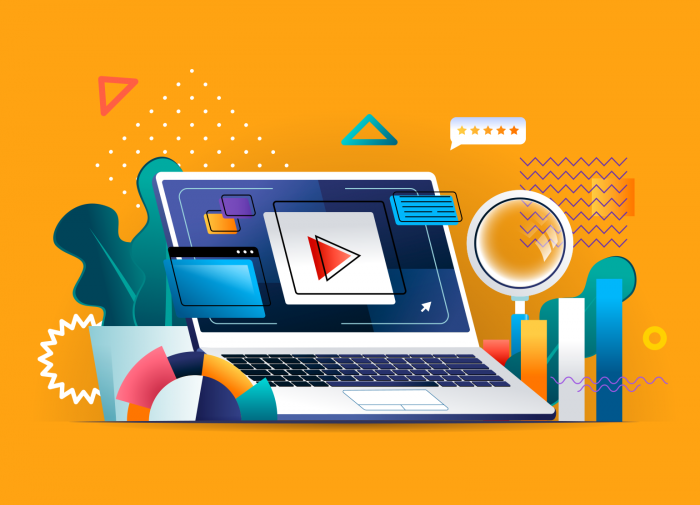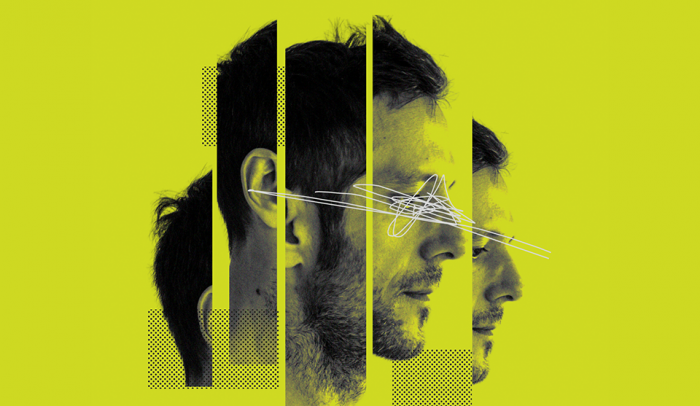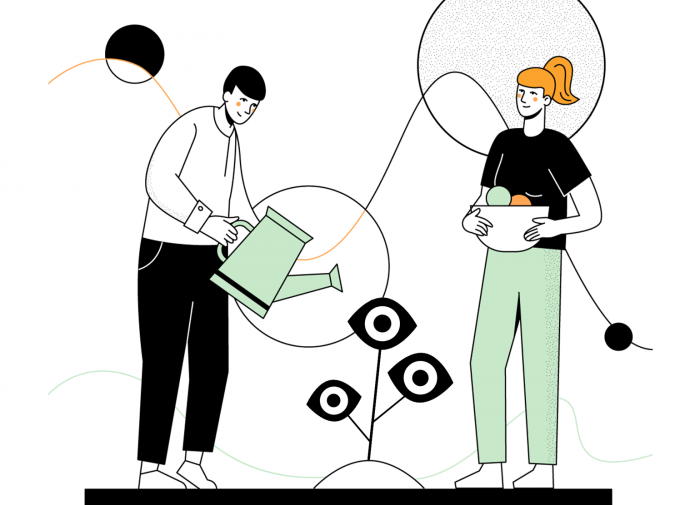While almost everyone has some anecdotal knowledge of working on a project that used a component of artificial intelligence, one relevant question looms: what is AI currently doing for digital marketing professionals? We hear a lot about the game-changing and magical transformations that AI is supposed to bring to the industry. But let’s set those projections aside for a second. Let’s talk about today—real time, real people. What can AI do for you?
You’re probably plenty familiar with AI, but before we move forward, let’s define the term so we’re clear. Artificial intelligence is the sub-field of computer science concerned with building “smart machines” that are capable of performing advanced tasks, ones that previously required a human. To date, AI has been especially useful in a few fields, including manufacturing. In that area, AI has made it possible to test designs virtually, saving time and money for everyone involved. One example of these virtually-tested designs is a hyper-personalized car seat collaboration between French electronics giant Dassault and Tesla.
But that being said, AI still has a long way to go, especially for marketers. While writing bots can produce very basic, fact-based reports, they can’t replace a creative human writer at this point. But there are also areas in digital marketing where AI can—and definitely can’t—be of service. Here, we’ll take a look at a few.
Digital Marketing & AI
AI is already proving its use as a general tool for digital marketers and advertisers by helping to create strong campaigns, ones that drive brand awareness and sales. Since AI learns as it goes and is therefore always improving itself, future applications—especially in Big Data-related areas and AI-powered systems—can already test a campaign’s efficiency and results using past data to simulate a campaign. Smart sentiment analysis tools and techniques can also facilitate digital marketing in a whole host of ways from the beginning to the end of a campaign. These tools can reach out to potential customers and generate and convert leads with more efficiency, accuracy, and speed than “purely human” attempts to do so.
On the product side, AI is already changing the game by identifying and predicting product market share before launch and conducting sophisticated competitor analysis. Artificial intelligence is already helping digital marketers cut costs, becoming more efficient and productive. Paul Fernon, a senior manager of analytics at Accenture, says that effective modern marketers are using AI to bridge gaps that previously existed in standard data collection.
“(Successful businesses) are using AI models, analytics tools and techniques to bring together a wide range of previously siloed, structured and unstructured data sets, and merge them with data from ecosystem partners,” Fernon wrote. “This convergence of transactional data, demographic data and psychographics that helps brands infer what customers are thinking and when they might make a purchasing decision.”
Brand consultant and copywriter Amy Carr notes that AI increases efficiency more than anything else. “It’s an amazing research tool,” she said. “What used to take weeks at a time literally takes a few hours now, thanks to AI. It frees you up to spend more time on creative thinking.”
Target Next: AI Writers
A writer might think that their line of work was off-limits to AI, but anyone who has ever used a spell check program could have probably anticipated AI’s eventual encroachment. But now, creatives don’t even have to wonder, because real-world examples exist.
In 2019, a Singapore-based data science center, under the umbrella of the agency Dentsu, launched “Project Leo,” an AI-powered copywriter that cross-references previously produced ads with consumer intent capabilities to produce Google Search ads. The agency reports the project improved click-through rates by about 10 percent and reduced its cost-per-click by over 30 percent. One year earlier, Alibaba developed its own AI-based copywriting tool that can generate 20,000 lines of copy per second. Though the company claimed that the tool passed the Turing test, thus exhibiting intelligent behavior similar to a human, it said the copywriting bot won’t ever replace humans, only supplementing their work.
Writing isn’t the only creative field that’s seeing AI entrants. At the 2016 Cannes Lions International Festival of Creativity, advertising agency J. Walter Thompson (now known as Wunderman Thompson) took home a huge haul of awards for “The Next Rembrandt.” The art project gathered a group of historians, data scientists, and engineers that apparently taught a machine to think and paint like the legendary Dutch artist, ultimately creating a new painting distilled from all 346 of his works.
So if they can teach a bot to paint like a Dutch Golden Age visionary, they can probably teach it how to write an email like your average marketer. It’s just a matter of time before these tools attempt actual original, creative copywriting. But will they be able to deliver amazing, believable ads, or the sophisticated writing of, say, Hemingway? And without any human assistance?
“AI tools can save you time and sometimes produce a draft that helps along your process,” Carr said. “But in the end, the writer has to decide the original concept for an article, then work on tone and specifics. AI-powered bots can’t do that, at least not yet.”
Logic-Based Creative Directors & Big Data Analysis
In 2016, McCann Erickson Japan “hired” an AI as a creative director for the agency’s commercial work. The bot, called “AI-CD β,” was developed through the “Creative Genome Project,” one of the first projects undertaken by McCann Millennials and Shun Matsuzaka.
“Our team didn’t have a creative director, so we thought, why not create one ourselves with artificial intelligence?” Matsuzaka said. “Our hope is to grow into a world-class creative director that will leave a mark in the advertising industry.”
Since then, creative planners around the world have been inputting award-winning creative work into different databases and using the resulting databases to direct them with specific information about target audiences and how successful certain similar ads have been with them. AI also avoids human error, as it is able to compare and contrast hundreds (even thousands) of images at a speed that an entire team of humans could never do. Using an artificial intelligence tool, the human creative director can spend their time weighing ideas and comparing AI-produced drafts rather than being burdened by time-consuming “technical” work that could potentially take weeks.
Ared Spendjian, a freelance creative director formerly of the advertising agency Ogilvy, was skeptical at first. But recently, he’s come around on the concept. He notes that AI primarily helps him when it comes to production. “We use AI whenever using Photoshop to retouch images, and in our daily process: when we resize, retouch, change details or place disparate images together, even when searching for images,” Spendjian said. “It is tremendously liberating and a priceless time-saver.”
But while he lauds AI’s help on the production side, he says it can’t do everything yet. “Really great ads are all based on moments of truth taken from a human experience,” he added. “AI cannot replicate that—at least not yet.”
Fortunately for the old-fashioned, there will always remain an element of creativity that cannot quite be duplicated by AI—even if that expresses itself in tonal, visual, or humor-based adjustments to campaigns originally developed with the help of AI.



